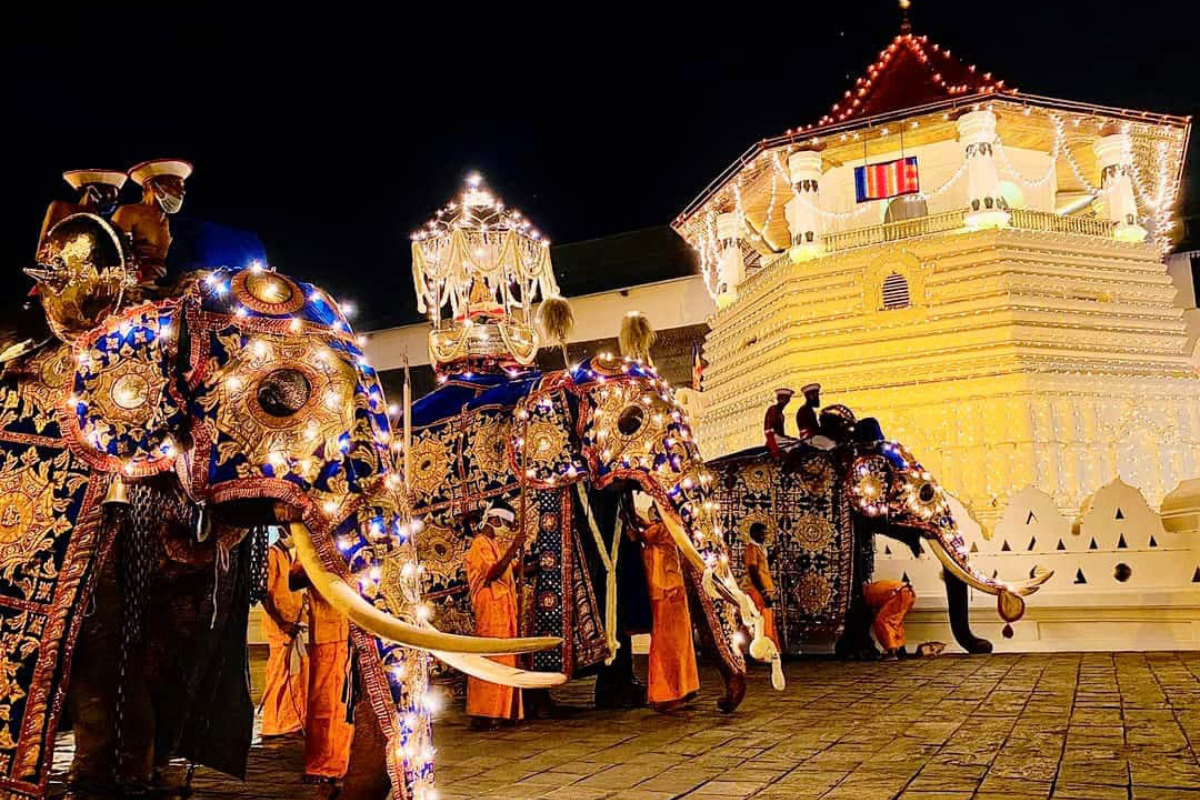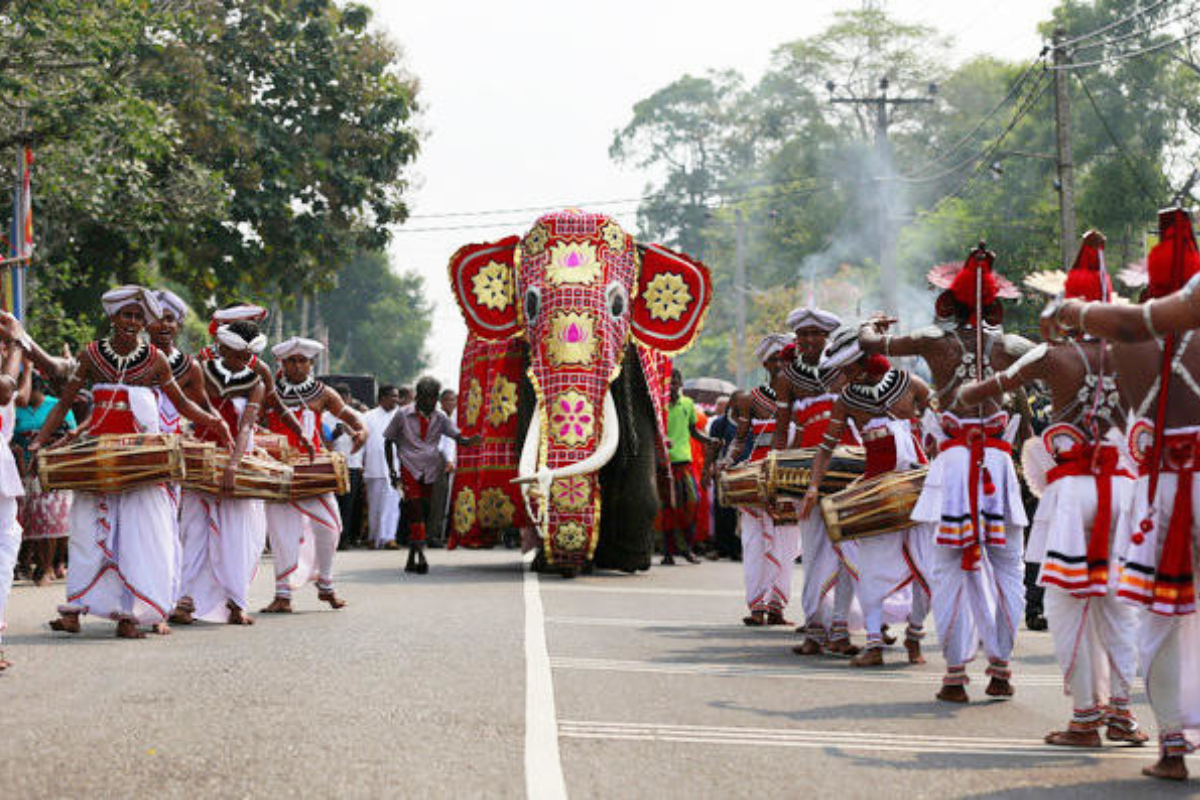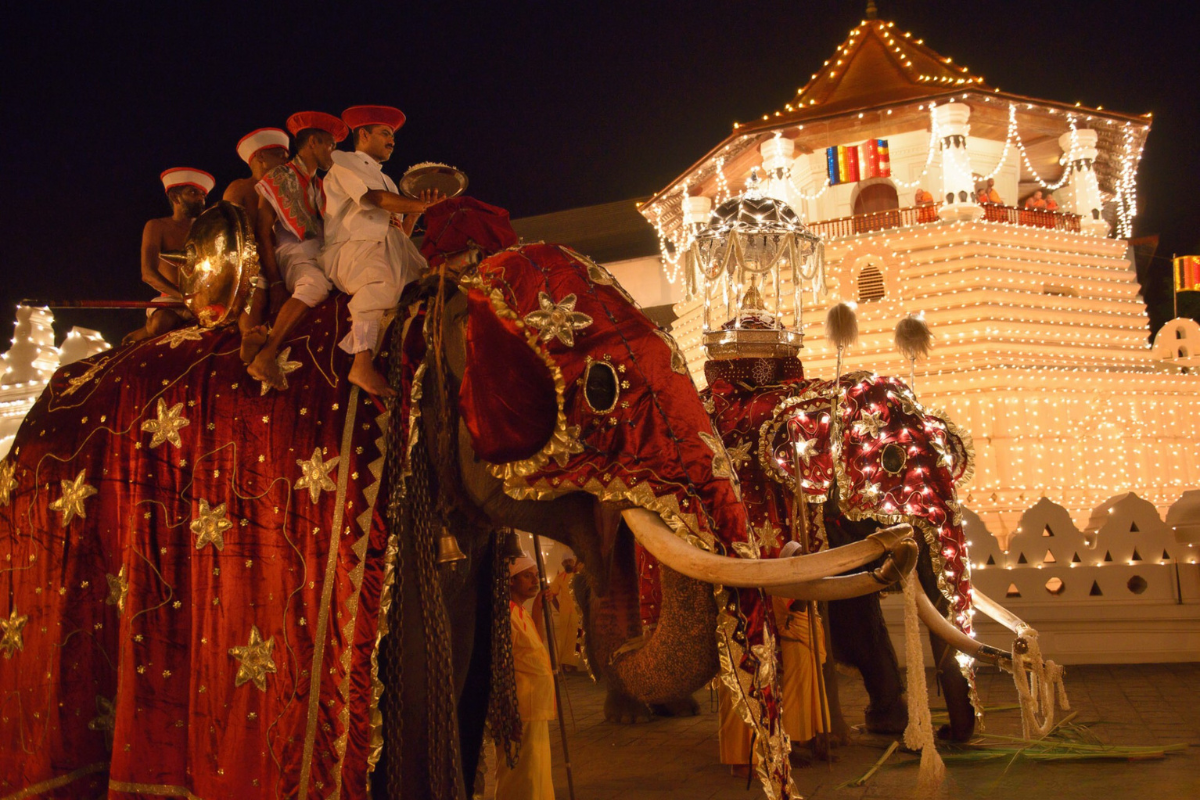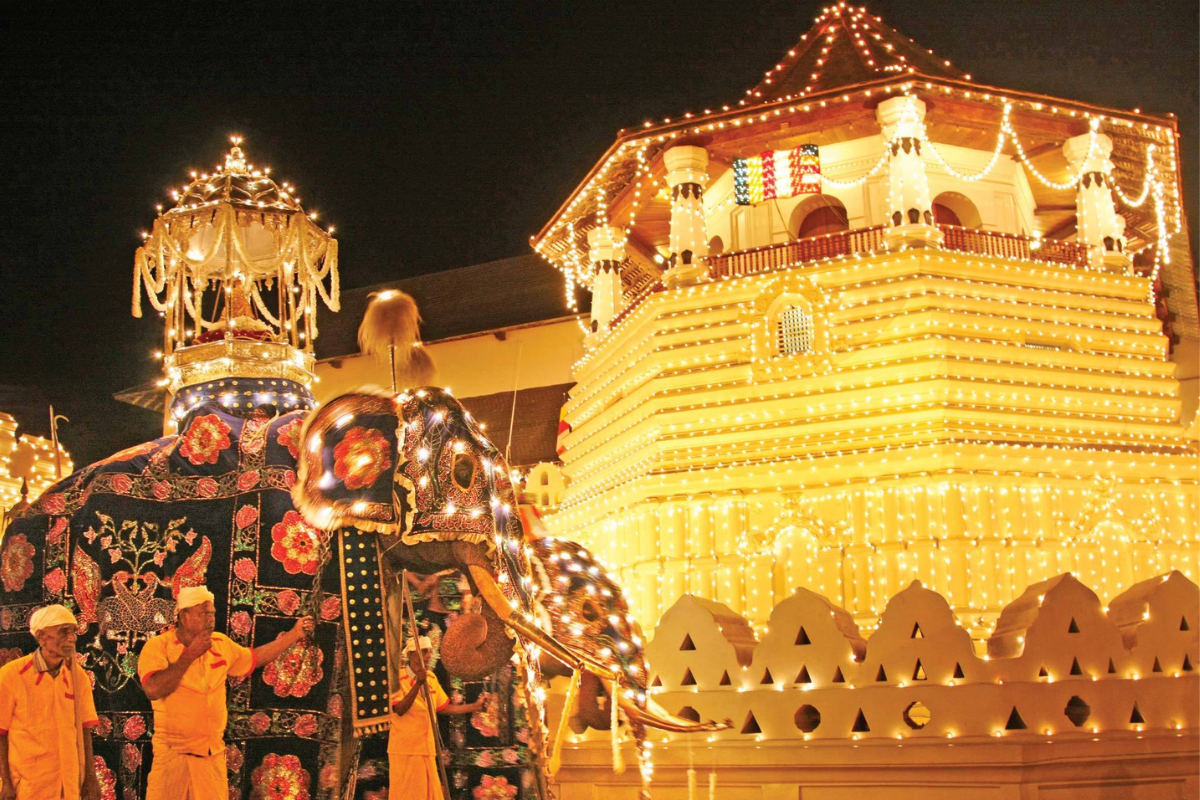The Esala Perahera boasts an ancestry that stretches back centuries. Legends trace its roots to Emperor Ashoka of India, a fervent follower of Buddha, who initiated grand processions to honor the relics of the Buddha. However, the Esala Perahera, in its current form, is believed to have crystallized around the 18th century during the reign of Sri Lankan kings.

Photo: Lankasara
The Esala Perahera is a vibrant and historic celebration held annually in Kandy, Sri Lanka. This ten-day long spectacle, occurring in July and August, transcends a mere festival. It is a mesmerizing blend of cultural heritage, religious devotion, and captivating performances. To delve into the essence of Esala Perahera, we must explore its origins, delve into the procession’s elements, and understand its cultural significance.
The Esala Perahera boasts an illustrious history, with roots tracing back centuries. Theories suggest the procession’s foundation lies in ancient rituals practiced during the reign of Emperor Ashoka in India. These pageants, known as peraheras, were held to honor deities and royalty.
However, the Esala Perahera in its current form is believed to have originated in the 18th century, during the reign of King Kirti Sri Rajasinha. The king, who established Kandy as the last kingdom of Sri Lanka, is credited with formalizing the procession as a grand spectacle to venerate the Sacred Tooth Relic of Buddha. This relic, housed within the Sri Dalada Maligawa, is considered Sri Lanka’s most sacred Buddhist possession.
The enchanting procession: A kaleidoscope of elements
The Esala Perahera unfolds as a dazzling spectacle, a kaleidoscope of elements that weave a story through the streets of Kandy. Each night unfolds with a captivating parade, meticulously organized into five sections, each contributing to the enchanting atmosphere.

Photo: Arab News
The procession kicks off with the Kapuralas, representatives of the province’s traditional governing body. Their presence establishes a sense of history and continuity. Drummers and flag bearers follow close behind, setting the rhythmic pulse of the procession. The rhythmic thrumming of drums and the vibrant display of banners announce the approaching spectacle, drawing crowds and creating an air of anticipation.
Adding a touch of drama and intrigue are the Whip Crackers. Their rhythmic cracking of whips serves a dual purpose: controlling the crowds and acting as a form of purification. The sharp pops break through the building excitement, reminding everyone of the spiritual significance underlying the festivities.
As the procession progresses, a kaleidoscope of cultural heritage bursts forth. Dancers and Musicians take center stage, their vibrant attire and captivating performances drawing gasps and applause from the audience. Traditional Kandyan dancers, adorned in colorful costumes, mesmerize onlookers with their graceful movements and intricate footwork. Musicians on a variety of instruments weave their magic, filling the air with a mesmerizing cacophony that ranges from the rhythmic drumming to the haunting melodies of traditional flutes. This section adds a touch of vibrancy and artistry to the procession, showcasing the rich cultural tapestry of Sri Lanka.
Undoubtedly the stars of the show are the majestic elephants. These gentle giants, adorned in elaborate costumes, add a touch of grandeur to the procession. Their presence evokes a sense of awe and respect, their size and strength creating a mesmerizing spectacle. Some elephants carry beautifully decorated Kandyan masks, representing the island’s rich folklore and heritage. The most significant figure, however, is the tusker carrying the Maligawa, a replica shrine believed to house the relic casket. This portion of the procession embodies the essence of the festival – the veneration of the sacred relic.

Photo: Magda Munteanu
The procession concludes with a solemn section featuring devotees carrying offerings and chanting prayers. This segment reflects the deep religious undercurrent of the festival. The devout crowd, their faces etched with reverence, underscores the spiritual significance of the Esala Perahera. Chants and prayers fill the air, creating a sense of piety and devotion that lingers long after the procession has passed.
The entire spectacle is a sensory overload in the best way possible. From the vibrant colors of costumes and floats to the rhythmic beats of drums and the captivating performances, the procession is a feast for the eyes and ears. The soft glow of oil lamps bathes everything in a warm light, creating a truly magical atmosphere that celebrates Sri Lanka’s rich heritage, vibrant culture, and deep-rooted faith.
A celebration beyond spectacle: Cultural significance
The Esala Perahera holds immense cultural significance for Sri Lankans. It’s a celebration that transcends religious boundaries, uniting people from all walks of life in a shared expression of faith and cultural pride.
At its core, the Esala Perahera is a grand religious offering to the Buddha. The procession serves as a way to venerate the Sacred Tooth Relic, believed to be a tooth of the Buddha himself. The presence of this sacred relic is seen as a powerful symbol of blessings upon the nation. Many Sri Lankans believe that the elaborate rituals and offerings appease the gods and deities, ensuring good harvests, prosperity, and protection from misfortune. The rhythmic chanting of monks, the burning of incense, and the reverence accorded to the relic all contribute to the deeply spiritual atmosphere of the festival.
The Esala Perahera acts as a living testament to Sri Lanka’s rich cultural heritage. Traditional art forms like drumming, dancing, and mask-making are not merely showcased during the festival; they are an integral part of its very fabric. Generations of dancers, drummers, and artisans dedicate themselves to honing their skills, ensuring these traditions are passed down for future generations. The vibrant costumes, intricate float designs, and the rhythmic drumming all represent centuries of artistic development, offering a glimpse into the soul of Sri Lankan culture.

Photo: Time Out
The Esala Perahera transcends ethnic and religious divides, bringing together people from all communities to celebrate their shared heritage. Whether Sinhalese, Tamil, Muslim, or Buddhist, Hindu, or Christian, Sri Lankans come together to witness and participate in this grand spectacle. The shared experience fosters a sense of national unity and pride, reminding everyone of the rich tapestry that is Sri Lankan culture. The festival becomes a powerful symbol of unity, reminding everyone that despite their differences, they are all part of a larger Sri Lankan identity.
The Esala Perahera is a vibrant tapestry woven with religious devotion, cultural heritage, and national pride. Witnessing this spectacle is a truly immersive experience, transporting you to a world steeped in tradition and brimming with vibrant energy.

